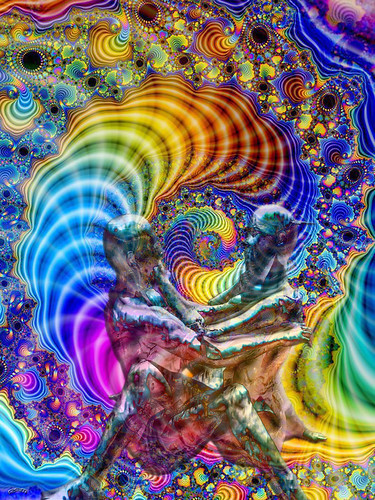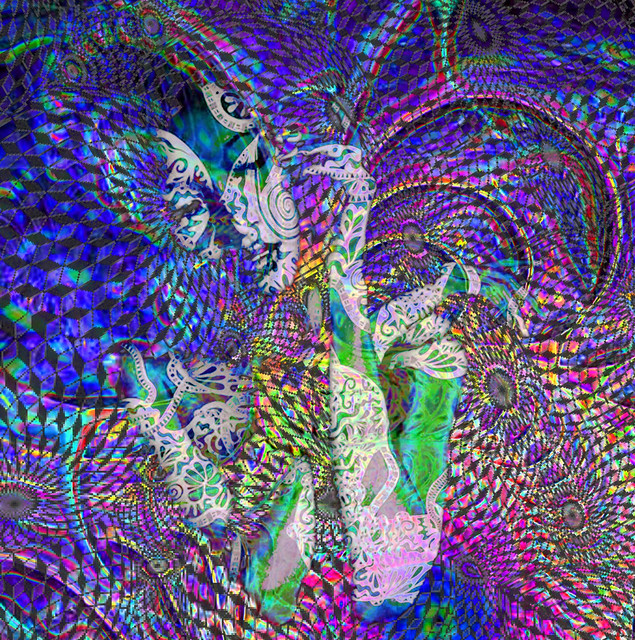The Power of Dreaming
Can Our Dreams Solve Problems While We Sleep?
Remarkable
new evidence of the power of 'dream telepathy
It appears possible that people can intentionally dream details about the personal problems of an unknown individual, simply by examining a picture of the target and then “incubating” or planning to dream about that individual’s problems.
Distinguished cognitive scientist Carlyle Smith, a very careful and rigorist experimentalist who is a Lifetime Professor Emeritus in the Department of Psychology at Trent University in Canada, presented the data in a recent paper (Smith, 2013; "Can healthy, young adults uncover personal details of unknown target individuals in their dreams?"1). Smith was and is a driving force in the revolutionary transformation in our understanding of how sleep can facilitate memory consolidation. The design of his experiments on dream “telepathy” were similarly well designed, and so need to be taken seriously.
Experiment 1 was a pilot study focused on the development of experimental materials, procedures and dream coding techniques. I will focus here on experiment 2, in which 66 students were asked to dream about the life problems of a target individual whom none knew. (Neither did Smith himself.) Participants simply viewed the photo and then attempted to dream about the problems of that individual. They were told that the person's problems could be health-related, emotional, financial, or any number of other concerns. (Another 56 students followed the same procedure, but the photo that they examined was of a fictitious face generated by a computer.)
Smith obtained the photo of the target individual from a friend who verified her actual problem before the experiment began. The individual was a middle-aged woman with multiple problems: She had multiple sclerosis, especially in her hands, requiring frequent medication to reduce the pain. She was also the primary caregiver for her mother, who was in the final stages of lung cancer. She had recently lost her husband to an industrial mishap—he was accidentally crushed by a front-end loader, and in the process, a limb was severed. The woman was also involved in a very serious car accident.
To discover whether his subjects could dream about any of this woman’s problems simply by examining a photo of her, Smith coded several types of elements in the dreams of participants both before they attempted to dream about the woman (pre-incubation), and after (post-incubation). The dream categories that were scored included:
1.
Any
mention of torso or torso problems;
2.
Any
mention of head parts or head problem;
3.
Any
mention of a limb or limb problems;
4.
Any
mention of breathing or breathing problems;
5.
Other
health problems;
6.
Financial
problems;
7.
Problems
related to social or marital relationships;
8.
Car/driving
problems.
Why
Did It Work?
 Were these
striking results due to chance—a sort of indiscriminate elevation of all kinds of
“problems” in the post-incubation dreams? Probably not. In the control group,
there was no such elevation in post-incubation dreams. Nor did unrelated
high-profile problems like cancer, heart disease, or mental illness appear in
any substantial way in the subjects' dreams.
Were these
striking results due to chance—a sort of indiscriminate elevation of all kinds of
“problems” in the post-incubation dreams? Probably not. In the control group,
there was no such elevation in post-incubation dreams. Nor did unrelated
high-profile problems like cancer, heart disease, or mental illness appear in
any substantial way in the subjects' dreams.Here's one striking example of a post-incubation dream from a subject in the experimental group:
"[W]oman has crippled hands and can’t open the pill bottle. The right arm does not work and there is a lot of pain. Her hands are all crippled and rolled almost into fists.”
While these results are indeed striking and intriguing, the crucial comparison is between the frequency of “hits” in subjects' post-incubation dreams and the baseline frequency of the generic versions of these “hits" in dreams? In other words, how often do limbs, car crashes and breathing problems occur in dreams at all? Do these post-incubation “hits” rise above those baseline frequencies? Smith tracked baseline frequencies for these topics in his subject's pre-incubation dreams but still found a significant rise in the proportion of hits in post-incubation dreams.
It is reasonable to conclude that Smith has identified something more here than just a statistical artifact.
Let’s say that some sort of dream telepathy is real—and that dreams are more sensitive signal detection devices than our daytime mental states. What could account for this sensitivity? Smith mentions a few possibilities: He notes that correlated brain signals between two isolated individuals has been documented using functional magnetic imaging. Striking instances of apparent dream telepathy and similar brain activity patterns has been noted between twins in particular.
Whatever the mechanism, tests of the reality of dream telepathy should continue apace. Use of huge dream communities, like those at dreamboard.com and dreamscloud.com, http://www.dreamscloud.com/] should be enlisted. If hits continue to rise to above chance levels, as in Smith’s studies, imagine if one had 200,000 dreamers attempting to dream the details of a pictured individual's problems? Thousands to millions of dreamers might be enlisted to dream about possible practical solutions to the target's problems.
Then we might then really begin to understand the power of dreams!
1 Explore 2013; 9:17-25
Dreams and the Many Worlds Interpretation of Quantum Physics
The
dreams of our counterparts in parallel worlds
So much rubbish has been written about consciousness and quantum physics that I hesitate to wade into the morass. I nevertheless believe that something interesting and substantive may be gained by conducting thought experiments with respect to the relation of quantum physics and consciousness if we use the many worlds interpretation (MWI) of quantum phenomena, as well as the experience of dreaming as the stand-in for consciousness. Given that this is a thought experiment I also consider it worthwhile bringing in some of the “possible worlds” philosophy developed by many modern philosophers to solve puzzles in modal logic, most especially the version developed by David Lewis.
But first MWI: According to the Everett version of MWI, every time a quantum experiment with different possible outcomes is performed (this arguably obtains for all phenomena exhibiting chaotic dynamics), all outcomes are obtained, but we see only one outcome; the one measured/observed in this world. The other outcomes actually occur but each in a different world! These other unseen worlds are considered absolutely real. They obey the laws of physics just as our world does. When the experiment is performed and a measurement occurs the current world is split off, or branches off into a new history.
The new world is a duplicate of the parent world up to the last atom but it will have a new history slightly different from and counterfactual to the parent world and beginning from the branching event itself. For a branching event to occur there must be suppression of coherence of the superposition of 2 localized waveparticle packets (decoherence) with respect to a quantum system’s evolving interaction with its internal and external environments. Once decoherence occurs a branching event occurs and a new world is born.
A very large question is can any of these worlds (whether in MWI or in Lewisian framework) interact with one another? Can signals be exchanged between worlds? In the possible worlds framework developed by David Lewis and other philosophers, worlds cannot interact. Nor is it clear if MWI allows interaction between worlds. Some Everettian theorists seem to argue that the alternate worlds are so far away from Earth that information signals cannot be exchanged between the two worlds. If no interaction is possible then individuals are world bound and even though we have copies of ourselves in other worlds they are mere counterparts of the individuals in the parent world. I have a counterpart in every daughter world I initiate but even though my counterpart is identical to me in every respect these counterparts are not me but mere counterparts.
There are some reasons to believe however that worlds can interact. As has been pointed out by others if a counterpart has a brain identical to mine and identical memories etc then by the law of the identity of indiscernibles the counterpart is me. As the counterpart develops a history that diverges from the parent world anything is possible but at the moment of inception he must be me. If he is me then interaction must be possible as I can infallibly know what the other is thinking (at least at the inception of the branching event) and that is a genuine piece of knowledge about the other world.
Another reason to believe that signal exchange between worlds might be possible is the following: According to the possible worlds framework to say that things could be otherwise for me is to say that there is literally a world where they are in fact different in the relevant way for me. But if no interaction with that other world is possible for me then the fact that the alternative world actually exists in the relevant way is not available to me and for all intents and purposes, freedom is an illusion and I live in a world of metaphysical necessity.
But my experience directly contradicts this supposition. I can form counterfactuals concerning my experience and do so everyday (regardless of whether freedom is an illusion). It really does seem to be the case that things could have gone differently for me in myriad ways at virtually every instant of my life. Thus if I accept my experience of free action and contingency in my life as real and if the many worlds idea is correct then some interaction between worlds must be permitted.
 Now suppose
world boundedness is incorrect or at least can be relaxed as a constraint for
both MWI and the possible worlds framework; what follows for the nature and functions of
dreaming? First note, that dreaming largely consists of counterfactual
simulations of what might have been and what might be for the dreamer. A first
default and easy hypothesis would be then that dreaming actually really depicts
events occurring in a real alternate world unfolding from the initial branching
event. Given that counterfactual simulations are constructions of alternate
histories and futures for the dreamer we ask where do these alternate histories
occur. The common sense and most reasonable answer is of course that they occur
in the mind of the dreamer.
Now suppose
world boundedness is incorrect or at least can be relaxed as a constraint for
both MWI and the possible worlds framework; what follows for the nature and functions of
dreaming? First note, that dreaming largely consists of counterfactual
simulations of what might have been and what might be for the dreamer. A first
default and easy hypothesis would be then that dreaming actually really depicts
events occurring in a real alternate world unfolding from the initial branching
event. Given that counterfactual simulations are constructions of alternate
histories and futures for the dreamer we ask where do these alternate histories
occur. The common sense and most reasonable answer is of course that they occur
in the mind of the dreamer.But this is a thought experiment so we can ask: If the many worlds framework is correct and dreaming consists of counterfactual simulations of what might have been and what might be for the dreamer in a world that branches off of the dreamer’s parent world then is it possible that dreams actually depict what is going on in the life of my counterpart in the alternate world he lives in? If that is the case then my dreams are portals into the life of one of these branching worlds predicted by the MWI.
If that is the case then we can further ask what does the dreamer’s counterpart in the daughter world dream of? If you have a counterpart in an alternate world he has dreams. What does he dream of? He is presumably dreaming of you (his counterpart) and your life’s events. Is, therefore, your counterpart’s counterfactual simulations real accurate depictions of your actual life? In this case we now have an answer to all those many philosophers who have asked is life but a dream? The answer is literally yes; the dream of a counterpart to you who lives in a branching universe that is a daughter world to your world.
Under this scenario the content of dreams would be simple perceptions of the lives of your counterparts who live in daughter worlds to your world and the interpretation of dreams would be a simple matter of checking in with what is occurring in the lives of your counterparts as they are created each time a branching event occurs. Lucid dreams would be attempts to alter the histories of an alternate world and so on…
Does this simple thought experiment teach us anything interesting about dreams? Yes, if the thought experiment has any veracity at all it suggests that dreaming is a perceptual process more than it is a memory process. Even if IWM and possible worlds are not realities and have no relevance for dreams the thought experiment suggests that the extent to which counterfactual simulations occurs in dreams suggests that we live as much in the imaginative, counterfactual realm of dreams as we do in the actual world. That is because our sense that our lives could have gone differently depends substantially on counterfactual simulations that occur every night in our dreams. But the thought experiment is built on so many tentative steps that it can only be considered at this point mere speculation if not complete rubbish.
The Dreams of the Dying
What
people dream of as their death draws near
This coming to terms with death is a process that extends beyond conscious thought and into the realm of the unconscious. This is reflected in the visions and dreams of the dying that can be so vivid at times that the person experiencing them can be mistaken for being delirious or hallucinating in response to medications.
Researchers at the Center for Hospice and Palliative Care in Cheektowaga, New York interviewed 66 patients in the weeks leading up to their deaths about the content of their dreams and found that almost all experienced dreams and visions involving deceased and living friends and relatives. Virtually all were described as feeling intensely real; about one third of the visions occurred while they were awake.
The majority of these dreams and visions were described as comforting and reassuring, especially those involving deceased friends or relatives. Some described encounters with childhood friends, others with long-dead parents and grandparents. One 91-year old woman dreamed of meeting her mother in a garden who reassured her that “everything will be okay;” others dreamed of parents and siblings who hugged and told them they loved them. Still others dreamed of angels, God, a beloved dog from childhood.
A common theme of many dreams was that of preparing for a journey. Some of those interviewed spoke of wanting to die and to join their loved ones, and of having been told it wasn’t their time yet.
The researchers found that the closer the dreams were to the person’s death, the more comforting they became. Likewise, the presence of end-of-life dreams and visions was predictive of a peaceful and calm death.
This study helps us to better understand the final stages of death, and encourages us to be reassured—rather than alarmed—by the presence of these kinds of vivid dreams and visions in the dying. By understanding and being able to talk openly about these dreams with the dying, it becomes possible to share in their acceptance of death as the natural conclusion to life that it is, to comfort them, and to be comforted.
From Psychology Today @ http://www.psychologytoday.com/blog/dream-catcher/201404/can-our-dreams-solve-problems-while-we-sleep and http://www.psychologytoday.com/blog/dream-catcher/201407/dreams-and-the-many-worlds-interpretation-quantum-physics and http://www.psychologytoday.com/blog/sleeping-angels/201409/the-dreams-the-dying
For more ways to disprove a double negative see http://nexusilluminati.blogspot.com/search/label/no%20black%20holes
- Scroll down through ‘Older Posts’ at the end of each section
Hope you like this
not for profit site -
It takes hours of work every day by
a genuinely incapacitated invalid to maintain, write, edit, research,
illustrate and publish this website from a tiny cabin in a remote forest
Like what we do? Please give anything
you can -
Contribute any amount and receive at
least one New Illuminati eBook!
(You can use a card
securely if you don’t use Paypal)
Please click below -
Images by R. Ayana – https://farm6.staticflickr.com/5490/10572282704_4b31e92d92_k.jpg
For further enlightening information
enter a word or phrase into the random synchronistic search box @ the top left
of http://nexusilluminati.blogspot.com
And see
New Illuminati – http://nexusilluminati.blogspot.com
New Illuminati on Facebook - https://www.facebook.com/the.new.illuminati
New Illuminati Youtube Channel - http://www.youtube.com/user/newilluminati/feed
New Illuminati on Google+ @ https://plus.google.com/115562482213600937809/posts
New Illuminati on Twitter @ www.twitter.com/new_illuminati
New Illuminations –Art(icles) by
R. Ayana @ http://newilluminations.blogspot.com
The Her(m)etic Hermit - http://hermetic.blog.com
The Prince of Centraxis - http://centraxis.blogspot.com (Be
Aware! This link leads to implicate & xplicit concepts & images!)
DISGRUNTLED SITE ADMINS PLEASE NOTE –
We provide a live link to your original material on your site (and
links via social networking services) - which raises your ranking on search
engines and helps spread your info further! This site is
published under Creative Commons Fair Use Copyright (unless an individual
article or other item is declared otherwise by the copyright holder). Reproduction
for non-profit use is permitted & encouraged, - if you give attribution to the work &
author. Please include a (preferably active) link to the original (along with
this or a similar notice).
Feel free to make non-commercial hard (printed) or software copies or
mirror sites - you never know how long something will stay glued to the web –
but remember attribution!
If you like what you see, please send a donation (no amount is too
small or too large) or leave a comment – and thanks for reading this far…
Live long and prosper! Together we can create the best of all possible
worlds…
From the New Illuminati – http://nexusilluminati.blogspot.com



No comments:
Post a Comment
Add your perspective to the conscious collective